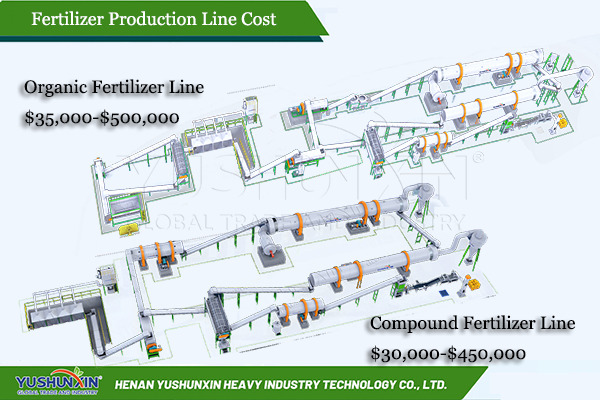Starting a fertilizer manufacturing plant involves a detailed understanding of various cost components, from initial setup to scaling operations. As global demand for fertilizers continues to grow due to the increasing need to enhance agricultural productivity, many entrepreneurs are eyeing opportunities in this sector. However, it’s crucial to grasp the fertilizer making plant financial involved in moving from startup to scale.
Initial Setup Costs
The journey begins with significant initial setup costs of fertilizer making. Securing land is the first major expense. The cost of land can vary widely depending on location, size, and proximity to raw materials and markets. Choosing a strategic location can help mitigate transportation costs and connect with key distribution networks.
Once the land is acquired, construction and infrastructure development follow. This involves building the fertilizer equipment workshop, warehouses, and administrative offices. The cost of construction will depend on the design, materials, and labor. Additionally, investments in utilities like water, electricity, and waste management systems are necessary for smooth operation.
Equipment and Machinery
Another significant component of startup costs is the procurement of specialized fertilizer equipment and machinery. These include mixers, granulators, dryers, and packaging units, which are essential for producing different types of fertilizers such as nitrogen, phosphorus, and potassium-based fertilizers. Investing in modern, efficient machinery can ensure high-quality production and reduce operational costs in the long term. However, these come with high upfront costs, and entrepreneurs must decide whether to purchase new equipment or explore leasing options. Learn more.

Raw Materials and Supply Chain
The cost of raw materials is a recurring expense that can fluctuate based on market conditions. Key raw materials like animal manure, ammonia, phosphates, potash, and other chemicals must be sourced reliably. Establishing robust relationships with suppliers and considering bulk purchasing agreements can help manage these costs. Additionally, setting up an efficient supply chain will ensure timely delivery of raw materials, minimizing downtime and enhancing productivity.
Labor and Training
Human resources of a fertilizer plant are also vital. Hiring skilled labor, including engineers, technicians, and plant operators, is necessary for smooth operations. The costs associated with recruiting and training staff can be significant. Investing in training programs not only aids in compliance with safety and environmental regulations but also boosts productivity and reduces the risk of accidents.
Regulatory Compliance and Environmental Considerations
Fertilizer manufacturing is subject to stringent environmental and safety regulations. Compliance with these regulations may involve additional costs for permits, environmental impact assessments, and pollution control equipment. Investing in eco-friendly technologies can also be a part of long-term cost savings and corporate social responsibility initiatives, enhancing the brand image.
Marketing and Distribution
Once the plant is operational, marketing and distribution costs become prominent. Developing a strong brand and establishing distribution networks involves expenses related to advertising, packaging, and logistics. Collaborating with distributors and retailers, and participating in trade shows, are effective strategies to enter and expand in the market.
Scaling Operations
As the business grows, scaling operations will involve further investment. This could mean expanding production capacity, introducing new product lines, or enhancing distribution networks. While scaling can lead to economies of scale and increased market share, it requires careful financial planning to ensure sustainable growth. If you need the investment in large scale fertilizer plant estabilishing, you can visit https://fertilizerequipmentmanufacturer.com/fertilizer-manufacturing-plant-cost/
In conclusion, establishing and scaling a fertilizer manufacturing plant involves multiple cost components, each requiring thoughtful consideration and strategic planning. By understanding these costs and effectively managing resources, businesses can position themselves for success in this vital industry, contributing to global agricultural productivity and food security.